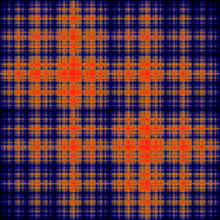This article includes a list of references, related reading, or external links, but its sources remain unclear because it lacks inline citations. (June 2013) |

In dynamical systems theory, the baker's map is a chaotic map from the unit square into itself. It is named after a kneading operation that bakers apply to dough: the dough is cut in half, and the two halves are stacked on one another, and compressed.
The baker's map can be understood as the bilateral shift operator of a bi-infinite two-state lattice model. The baker's map is topologically conjugate to the horseshoe map. In physics, a chain of coupled baker's maps can be used to model deterministic diffusion.
As with many deterministic dynamical systems, the baker's map is studied by its action on the space of functions defined on the unit square. The baker's map defines an operator on the space of functions, known as the transfer operator of the map. The baker's map is an exactly solvable model of deterministic chaos, in that the eigenfunctions and eigenvalues of the transfer operator can be explicitly determined.